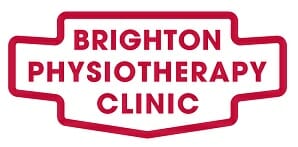Treatment for Lumbago
Lumbago, or low back pain, is a common disorder that is present in most adults. It is characterized by a burning sensation or shooting pain in the back. Lumbago affects the muscles, nerves and bones of the lower back. The symptoms of low back pain in most cases (40%–90%) improve in six weeks, especially for acute cases. Sub-chronic and chronic cases require physiotherapy and medical intervention to improve.
The onset of Lumbago occurs mostly in people aged between 20 and 40 years. The disorder is, however, common with people aged 40 to 80 years. The pain may be referred pain, meaning it is a symptom of a disorder affecting another part of the body. To prevent the pain from becoming chronic or leading to other complications, immediate physiotherapy is advised once the disorder is noticed.

What Causes Lumbago?
Lumbago, when classified according to causes, can be mechanical pain, non-mechanical pain, or referred pain. This shows that low back pain has varying causes. These causes can be linked to infections affecting the spine or internal organs as well as some auto-immune cases.
Most acute lumbago cases do not have a specific cause. They are instead signs of muscle strain or sprain. Other physical causes may include osteoarthritis, osteoporosis, infection of the spine, poor sleeping position, poor posture, weight gain during pregnancy, and stress.
What Are the Signs and Symptoms of Lumbago?
Lumbago itself is a sign or symptom of another disorder in most cases. Signs of low back pain, however, may range from tenderness at a specific point on the lower back, to diffused pain. The pain may be accompanied by sciatica and sleep disorders. In certain chronic cases, lumbago is accompanied by depression or anxiety.
Can Lumbago Lead to Other Complications?
Yes, chronic low back pain not only causes discomfort to the sufferer, but can also lead to other complications. These complications can be both physical and psychological, and may include nerve damage, weight gain, loss of work, depression, and insomnia.
What Are the Risk Factors for Lumbago?
There are certain factors that make individuals susceptible to lumbago. These include obesity, sedentary lifestyle, age, weight gain in pregnancy, poor lifting posture, smoking, lack of exercise, and certain psychosocial conditions such as dysfunctional relationships.
How is Lumbago Treated?
Most lumbago cases get better with time. For sub-chronic and chronic cases the treatment will depend on the underlying cause. Proper diagnosis (to identify the cause) is made through physical examination, laboratory studies, or diagnostic imaging. Once the cause is identified, proper treatment will commence immediately. Treatment mostly revolves around physiotherapy and medication to ease the pain.

Medication
Analgesics such as paracetamol or opioids are administered (alongside physiotherapy) to ease the pain. Nonsteroidal anti-inflammatory drugs (NSAIDs) are also used to reduce inflammation, and skeletal muscle relaxers provide relief from low back pain.
Physiotherapy
Osteopathy and physiotherapy are non-medical options that are used to provide better relief from lumbago. Physiotherapy treatments focus on getting the ligaments, bones and tendons of the lower nerves to function properly. Techniques may include manipulation and massage therapy.
Surgery
Surgery is used as a last option when physiotherapy and other options fail to provide relief from low back pain. It is also recommended when there is serious neurological impairment. It is very useful in patients with herniated discs or also in cases of spinal stenosis. Discectomy and spinal fusion are possible surgical procedures for treating lumbago.
Get Help
Lumbago causes extreme discomfort when left to degenerate to the chronic stage. This reduces the quality of life for the patient. Once low back pain is noticed, it is recommended to see a doctor or an osteopath immediately. Contact us for proper assessment of the condition and to commence physiotherapy immediately.
